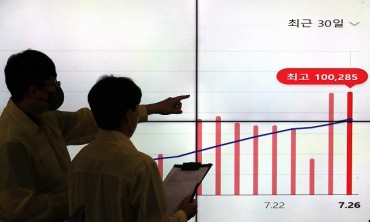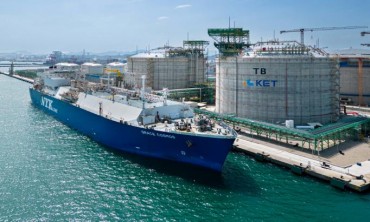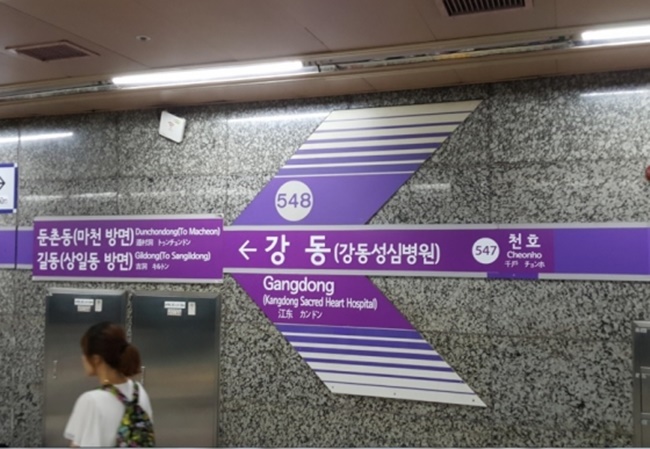
With an increasing number of large hospitals paying royalties to list their name alongside the original names of subway stations for marketing purposes, one university hospital official also expressed concern over the negative impact of Seoul Metro’s name-selling policy in the long run. (Image: Yonhap)
SEOUL, Aug. 30 (Korea Bizwire) – Criticism is growing against Seoul Metro’s controversial sale of subway station names, which began as an additional source of revenue to cover its deficits, with passengers slamming the policy that has now resulted in over 30 stations having two different names with little to no relevance to the location, such as hospital or university names.
With over 500 subway and train stations scattered around Seoul and the surrounding area, an increasing number of multiple-named subway stations in the Seoul Metropolitan Subway are rubbing millions of passengers the wrong way, causing annoyance and confusion, over what critics argue to be ‘too big a price’ to pay for relatively a small amount of revenue for the public transport corporation.
“This stop is Hyehwa, Seoul National University Hospital. The door is on your left.”
Such train announcements are echoed around Seoul’s subway system every day, a station name often followed by the name of a private business or university that doesn’t quite have the same ring to it.
Unsurprisingly, not everyone is a fan of the highly commercialized and confusing train announcements that make them think, ‘This stop is where?’
Jang, a 34-year-old passenger, doesn’t agree that it’s the best idea either.
“Holt Children’s Services, which is another name for Hapjeong Station, is too much of a mouthful and sounds unfamiliar, which makes me miss the station every time it’s announced. I’m afraid it defeats the whole point of train announcements.”
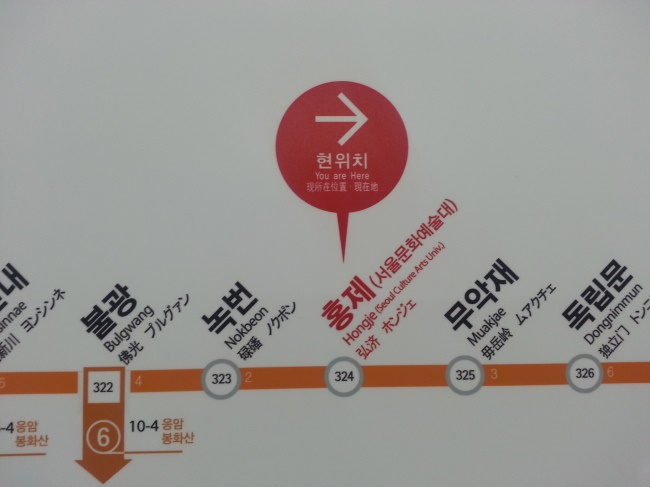
Unsurprisingly, not everyone is a fan of the highly commercialized and confusing train announcements that make them think, ‘This stop is where?’ (Image: Yonhap)
With an increasing number of large hospitals paying royalties to list their name alongside the original names of subway stations for marketing purposes, one university hospital official also expressed concern over the negative impact of Seoul Metro’s name-selling policy in the long run.
“The subway is public property, yet, as business partners change every three years, it could create confusion for passengers, as well as wasting money on replacing signs. I hope the Seoul Metropolitan Government comes up with measures to deal with the issue,” the hospital official said.
Starting this month, an additional 18 subway stations in Seoul will have multiple names, bringing the total number of multi-named stations to 32.
Famous examples, to name a few, include Jonggak Station on Line 1, which is currently also called SC Jaeil Bank; Sillim Station, also known as Yangji Hospital; Magok Station, with its second name Home and Shopping; and Hongje station, which is also referred to as Seoul Culture Arts University.
Through the auction process, Seoul Metro has reportedly earned around 6.4 billion won, which breaks down to 200 million won per station for a period of three years.
For Seoul Metro, which runs an annual deficit of around 300 billion won, it’s a useful source of income hard to give up on.
However, mounting criticism over what many consider to be an inconsiderate policy is forcing the country’s biggest transport corporation to take a change of course in its business strategy.
Adding fuel to the fire is the lack of companies and organizations interested in paying royalties for the use of a station name.
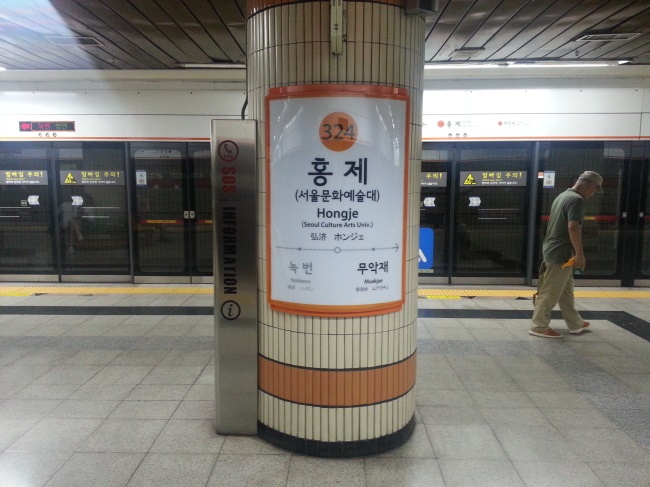
Criticism is growing against Seoul Metro’s controversial sale of subway station names, which began as an additional source of revenue to cover its deficits, with passengers slamming the policy that has now resulted in over 30 stations having two different names with little to no relevance to the location, such as hospital or university names. (Image: Yonhap)
Of 58 stations up for grabs this year, 35 stations are still available, which means stations whose names have been sold this year account for less than 40 percent of all stations on offer operated by Seoul Metro.
Contrary to Seoul Metro’s claim that selling station names will both bring in revenue to the corporation as well as satisfy passengers, it’s increasingly looking like the corporation’s attempt to kill two birds with one stone has backfired.
With challenges awaiting Seoul’s transport corporation, including calls for 24-hour service and an annual deficit of nearly 300 billion won, Seoul Metro is being urged to discover new sources of revenue without tainting its reputation as a public service.
Hyunsu Yim (hyunsu@koreabizwire.com)




